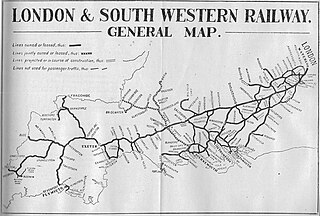
The London and South Western Railway was a railway company in England from 1838 to 1922. Originating as the London and Southampton Railway, its network extended to Dorchester and Weymouth, to Salisbury, Exeter and Plymouth, and to Padstow, Ilfracombe and Bude. It developed a network of routes in Hampshire, Surrey and Berkshire, including Portsmouth and Reading.
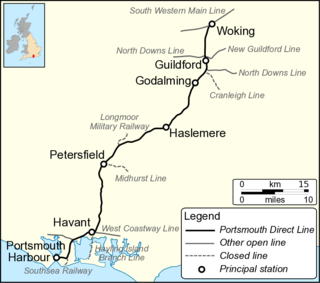
The Portsmouth Direct line is a railway route between Woking in Surrey and Portsmouth Harbour in Hampshire, England. It forms the principal route for passenger trains between London, Guildford and Portsmouth; connections are made to the ferry services which operate between Portsmouth and the Isle of Wight. The final section of line from Havant to Portsmouth is shared with other passenger routes.
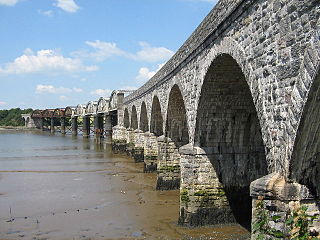
The Plymouth, Devonport and South Western Junction Railway (PD&SWJR) was an English railway company. It constructed a main line railway between Lydford and Devonport, in Devon, England, enabling the London and South Western Railway (LSWR) to reach Plymouth more conveniently than before.

Bulford is a village and civil parish in Wiltshire, England, near Salisbury Plain. The village is close to Durrington and about 1.5 miles (2.4 km) north of the town of Amesbury. The Bulford Camp army base is separate from the village but within the parish.
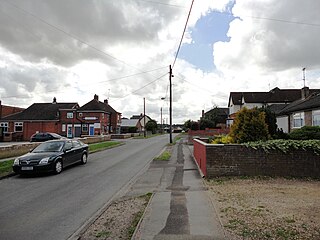
Durrington is a village and civil parish in Wiltshire, England. The village lies about 2 miles (3.2 km) north of the town of Amesbury, 10 miles (16 km) north-northeast of the city of Salisbury, and 2+1⁄2 miles (4 km) northeast of the Stonehenge monument. It is on the eastern part of Salisbury Plain, the largest remaining area of chalk grassland in northwest Europe. The parish includes the hamlet of Hackthorn, on the northern outskirts of Durrington, and the military settlement of Larkhill, 1.5 miles (2.4 km) to the west.
The Wilts, Somerset and Weymouth Railway (WS&WR) was an early railway company in south-western England. It obtained Parliamentary powers in 1845 to build a railway from near Chippenham in Wiltshire, southward to Salisbury and Weymouth in Dorset. It opened the first part of the network but found it impossible to raise further money and sold its line to the Great Western Railway (GWR) in 1850.
The Sprat and Winkle Line was the common name of the Andover to Redbridge railway line which ran between Andover and Redbridge in Hampshire, England. In the Romsey area it joined, and then left, the Salisbury to Southampton line. It was built by the Andover and Redbridge Railway, which was incorporated in 1858. In 1863 the uncompleted railway was taken over by the London and South Western Railway (LSWR), which opened the line in 1865. The line had been conceived as part of a trunk route from Manchester to Southampton, but when the Midland and South Western Junction Railway opened, the anticipated long-distance traffic was disappointing.
The Salisbury and Dorset Junction Railway was a railway company, that built a line from a junction near Salisbury to another near West Moors on the Ringwood to Wimborne line. It ran through the counties of Wiltshire, Hampshire and Dorset in England. It opened the line in 1866, and was worked by the London and South Western Railway (LSWR).

The Southampton and Dorchester Railway was an English railway company formed to join Southampton in Hampshire with Dorchester in Dorset, with hopes of forming part of a route from London to Exeter. It received parliamentary authority in 1845 and opened in 1847.
This article describes the history and operation of the railway routes west of Salisbury built by the London and South Western Railway (LSWR) and allied companies, which ultimately became part of the Southern Railway in the United Kingdom. Salisbury forms a natural boundary between the Southern Railway core routes in the counties surrounding London, and the long route connecting with the Devon and Cornwall lines.
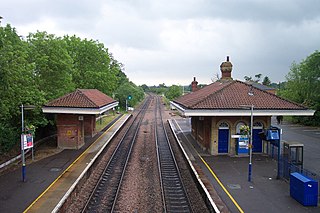
The Berks and Hants Railway comprised two railway lines built simultaneously by the Great Western Railway (GWR) south and west from Reading in an attempt to keep the London and South Western Railway (LSWR) out of the area that it considered to be its territory in England.
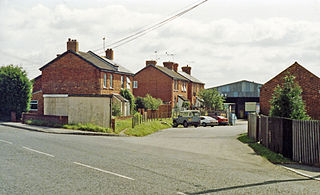
Amesbury railway station was a station in the county of Wiltshire in southern England. It was located on the Bulford Camp branch line, which diverged from what is now known as the West of England Main Line at a triangular junction between Grateley and Idmiston Halt. When it was open, Amesbury was the nearest station to Stonehenge and carried a lot of traffic to the military areas in and around Salisbury Plain, particularly during the Second World War in the preparations for D-Day.
The Salisbury branch line of the Great Western Railway from Westbury to Salisbury in Wiltshire, England, was completed in 1856. Most of the smaller stations were closed in 1955 but the line remains in use as part of the Wessex Main Line.
The Salisbury and Yeovil Railway linked Salisbury (Wiltshire), Gillingham (Dorset) and Yeovil (Somerset) in England. Opened in stages in 1859 and 1860, it formed a bridge route between the main London and South Western Railway (LSWR) network and its lines in Devon and Cornwall. Its trains were operated by the LSWR and it was sold to that company in 1878. Apart from a short section in Yeovil it remains open and carries the London Waterloo to Exeter service of South Western Railway.

Rollestone is a small village and former civil parish, now in the parish of Shrewton, on Salisbury Plain, in Wiltshire, England. It is near the River Till. Its nearest town is Amesbury, about 5 miles (8.0 km) away to the east.

Bulford railway station served the village of Bulford in Wiltshire, England, between 1906 and 1963.
The Aldershot and Alton lines of the LSWR were railways developed from 1849 onwards in the region in Surrey and Hampshire, England, between the Southampton main line and Guildford. First was a line from Guildford to Farnham, soon extended to Alton in 1852. The Reading, Guildford and Reigate Railway, an affiliate of the South Eastern Railway (SER), used part of that line by running powers. When the Aldershot Garrison and associated camps opened, suddenly Aldershot had a large population, both civilian and military, and the LSWR built a line from Pirbright Junction, on the Southampton main line. As well as serving Aldershot, this line gave a more direct route from London. It opened in 1870.










